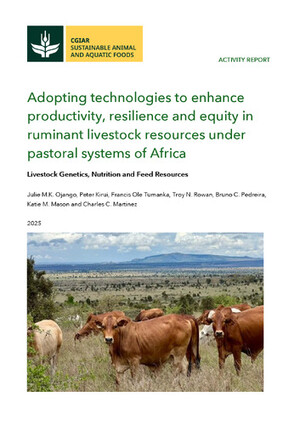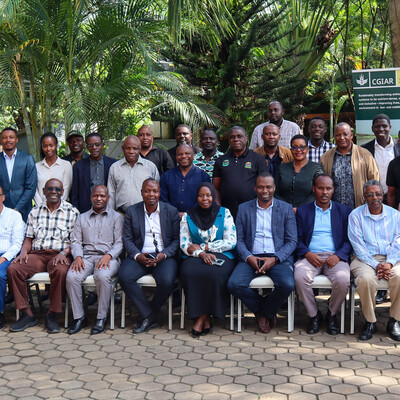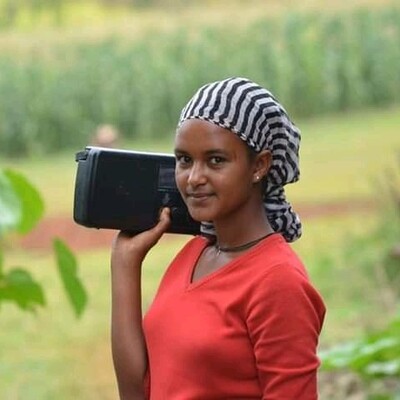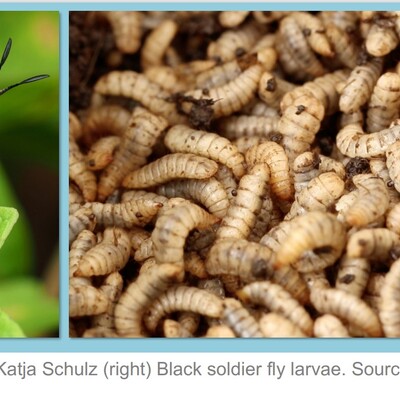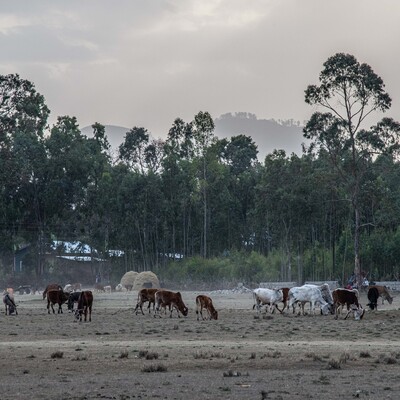
Localizing African dairy genetics in Rwanda
On the 30 May 2024, the African Asian Dairy Genetic Gains (AADGG) project was launched in Rwanda to revolutionize and improve dairy farming by collecting, monitoring, and evaluating data about cattle from farmers. This will allow farmers to identify their best animals, and breed more productive, effective, and resilient cattle.
The Rwandan dairy industry is critical to the country’s economy, people’s livelihoods and nutritional intake. Over 100,000 Rwandan households keep cattle, and the dairy industry currently contributes 6% of Rwanda’s GDP, with annual milk production estimated at around 445 milion litres. However, the per capita milk consumption is relatively low, at 40 litres per year, compared to other East African countries like Kenya, where milk consumption reaches 100 litres per year. Rwanda’s president, Paul Kagame, has set an ambitious goal for the country’s dairy sector: to ensure that every one of the 13 million Rwandans, including school children, receives half a litre of milk daily. This target is set to be achieved within two years.
Improving the dairy industry’s effectiveness and profitability is therefore critical to enhancing livelihoods in Rwanda and achieving President Kagame’s goal. A major challenge in improving the industry is that there is a lack of baseline data about the current efficiency of cattle in the country. This means that the very best cattle are not identified and thus not used for breeding, meaning fewer effective cattle are bred.
The AADGG project, funded by the Bill & Melinda Gates Foundation, will genetically profile, evaluate, and rank dairy bulls and cows based on their efficiency. The project is being implemented by the International Livestock Research Institute (ILRI), the Rwanda Agriculture and Animal Resources Development Board (RAB), the Royal Jersey Agriculture and Horticulture Society and Green Dreams Technology (GDT).
Participating farmers will upload data on their livestock feeding practices and production patterns of their cow or bull to the digital platform provided by the project to help identify and promote wider use of the top-ranked bulls and bull dams for breeding. Collecting this crucial information will also show farmers if their cows are under or over-performing compared to other cattle in their region.
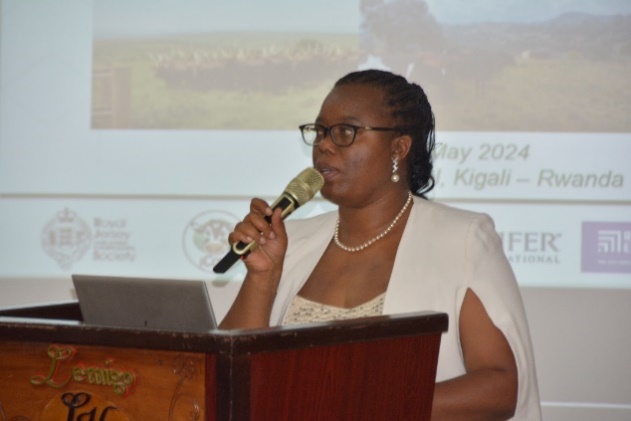
Solange Uwituze, director general of the Rwanda Agriculture and Animal Resources Development Board (RAB), speaking at the launch event in Kigali, Rwanda (Photo: Fenja Tramsen/ ILRI).
‘If you can’t measure it, you can’t improve it,’ explained Solange Uwituze, the director general of the RAB, at the launch event in Kigali, Rwanda. This is exactly the gap that the AADGG project will fill — without collecting baseline information, there is no foundation from which to improve.
Several of the key strategies for the AADGG approach include:
1. Digital national dairy performance recording: Establishing and revamping an efficient digital platform for capturing and managing national dairy performance data and translating that data into information that informs farmers, policymakers and dairy sector-related businesses.
2. Genomic evaluation pipeline: Utilizing data from national herds to create robust frameworks for selecting superior dairy bulls for artificial insemination and natural mating programs.
3. Farmer-centric e-education and feedback systems: Collaborating with Green Dreams Technology to empower farmers and dairy value chain actors through e-education and feedback systems.
4. Strategic partnerships for sustainability: Forming partnerships across public and private sectors, research institutions, non-governmental organizations (NGOs) and producers to ensure the sustained impact and scalability of the project.
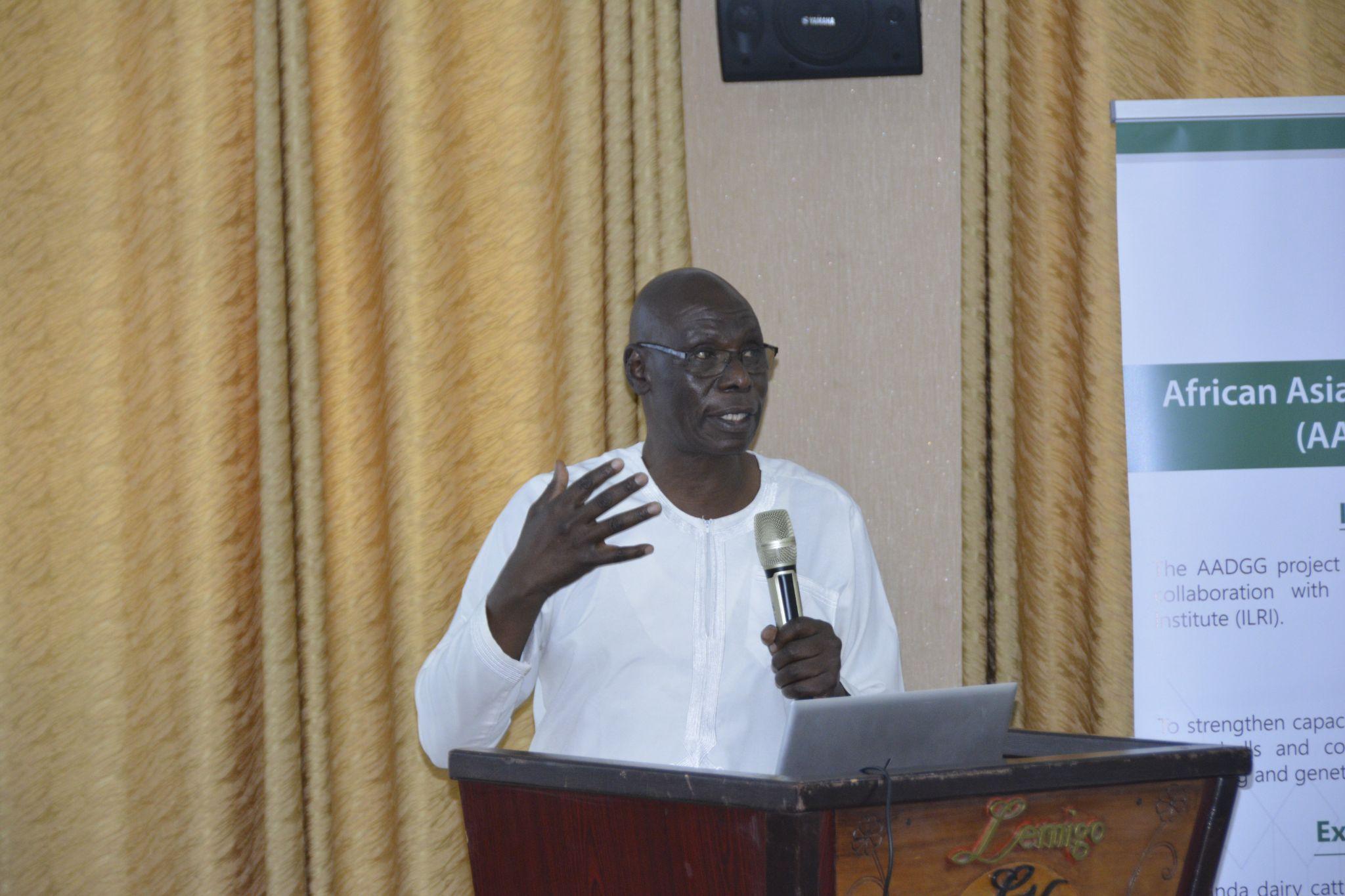
ILRI’s Okeyo Mwai speaking on the importance of launching AADGG in Rwanda. Photo: Fenja Tramsen/ ILRI.
Okeyo Mwai, head of the Livestock Genetics program at ILRI, explained ‘AADGG is empowering smallholder farmers, by giving them what they need to make their livestock enterprises productive and profitable.’
Several Rwandan dairy farmers attended the launch in Kigali. Nshimiyimana Jean Bosco, a smallholder dairy farmer, said ‘For me this is a very important way of helping my dairy practices.’ For farmers like Nshimiyimana, the AADGG project ‘is an opportunity to keep records of our cows based on the data. For instance, the farmer will be able to know the milking and dry periods.’ Nshimiyimana also said the project is ‘important for my children’ since he will be able to track the productivity of his cows across generations, and therefore only breed with his most profitable bulls.
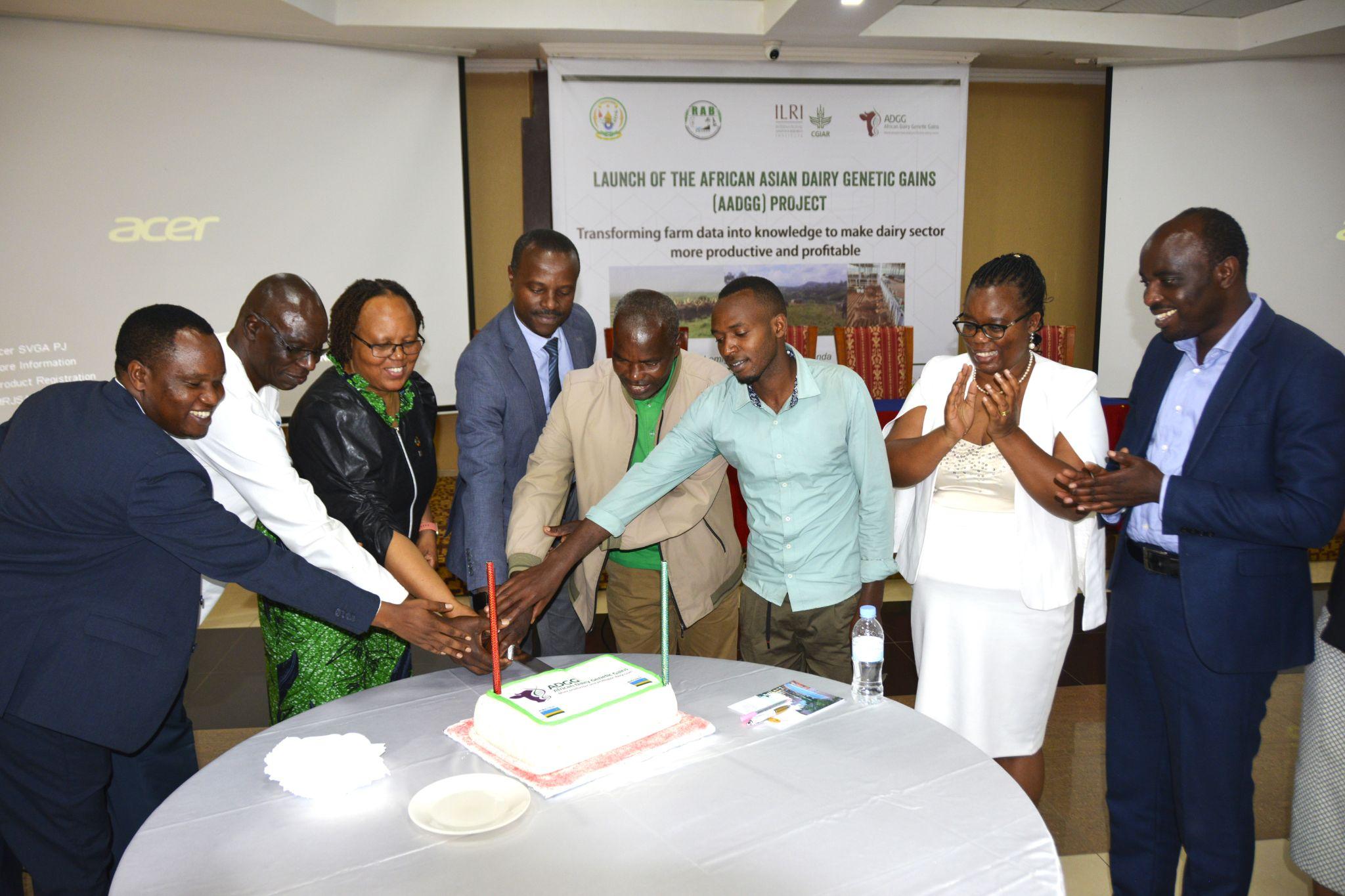
Celebrating the launch of AADGG in Rwanda (photo: Fenja Tramsen/ ILRI).
ILRI and Rwanda have a long history of collaboration within the dairy sector. At the launch event, Jean Claude Ndorimana, director general of Animal Resources Development in the Ministry of Agriculture and Animal Resources (MINIAGRI), spoke about ILRI’s previous support to MINIAGRI to develop the Rwanda livestock master plan (LMP) 2017/18 – 2021/22. The LMP has played a pivotal role in steering Rwanda’s dairy sector onto a path of significant growth. This achievement is attributed to several key initiatives supported by the LMP, including the one-cow-per-family policy, cattle husbandry practices, improved nutrition and genetics, artificial insemination (AI) implementation, and enhanced animal health. The director lauded these efforts saying the collaboration with ILRI, IFAD, Heifer International, the Rwanda Youth and Agriculture Forum and the Ministry of Local Government supported the comprehensive national cattle identification and registration campaign. This campaign provided valuable insights into the cattle population, revealing a herd of approximately 1.5 million cattle in the country. Ndorimana added that the LMP’s strategic approach and partnerships have set a strong foundation for the continued growth and sustainability of Rwanda’s dairy sector.
After the launch of the AADGG project, ILRI representatives Siboniso Moyo and Okeyo Mwai, alongside Su Kahumbu from Green Dreams Technology, met with Ildephonse Musafiri, the Minister of Agriculture and Animal Resources, to discuss ILRI’s work in Rwanda.
Moyo said ‘ILRI recognizes and appreciates the ongoing partnership between CGIAR and Rwanda. We hope the AADGG program will continue to grow our collaboration.’
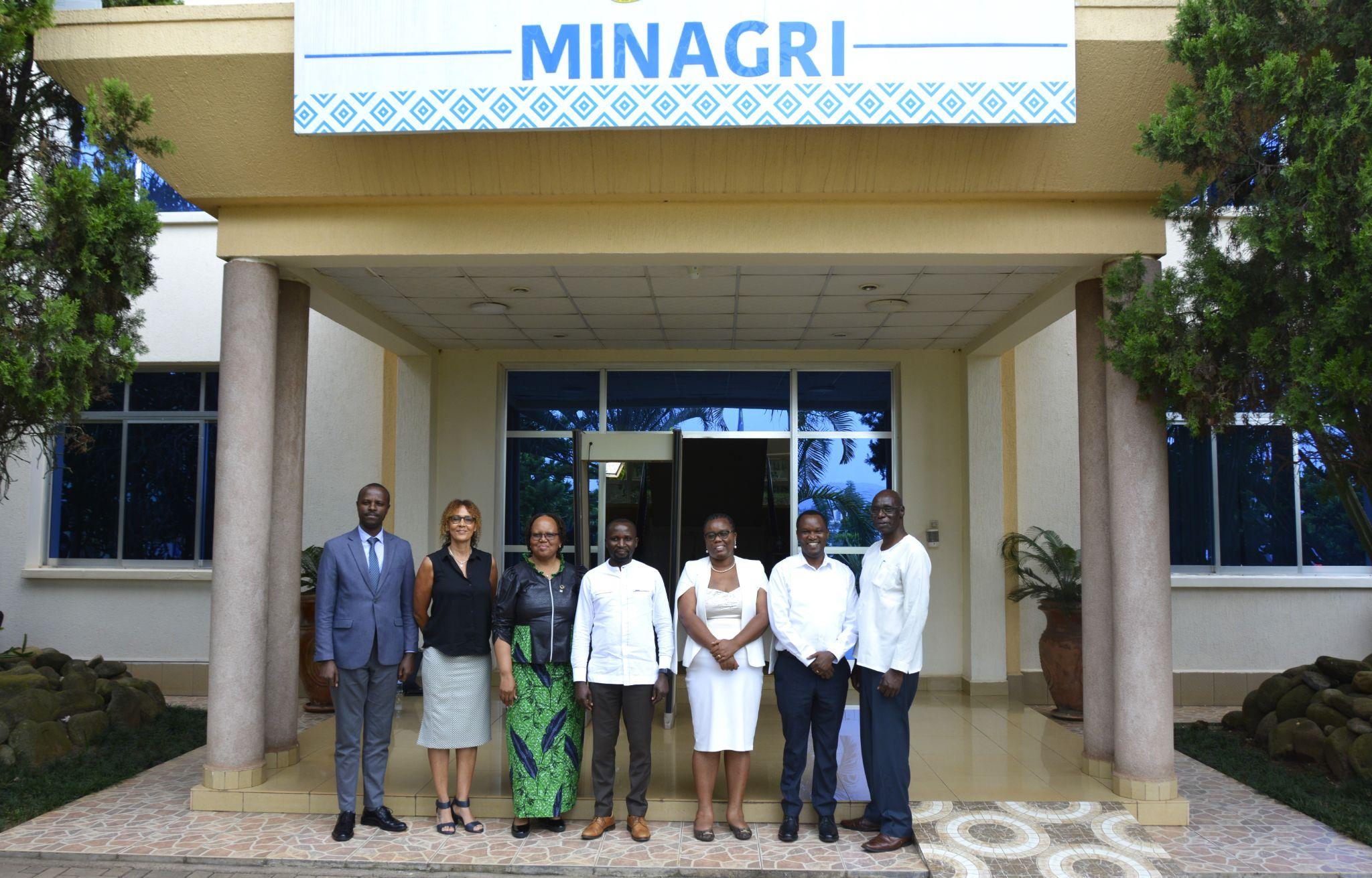
ILRI, Green Dreams Technology, and the minister at the Ministry of Agriculture and Animal Resources in Kigali, Rwanda (photo: Fenja Tramsen/ ILRI).
Moyo also congratulated Rwanda on its commitment to regional, national, and global agreements for improving dairy production. Rwanda was a forerunner to put a national livestock plan in place in 2007 in alignment with the State of the World Reporting animal genomics framework. Rwanda has also demonstrated strong political commitment to the Comprehensive Africa Agriculture Development Program (CAADP) and, in the 4th CAADP Biennial Review Cycle, emerged with the best overall score, as it had in the previous two cycles. The country’s efforts in improving dairy production align with CAADP’s agenda by boosting economic growth, enhancing food security and reducing malnutrition. Moreover, Rwanda’s focus on dairy development supports intra-African trade, which is expected to triple through CAADP and the Agenda 2063 initiatives. These two commitments are especially important to the dairy sector and present a substantial opportunity for Rwanda to grow its sector and create wealth for smallholder farmers and boost the nutritional status for its people.
The AADGG project will support Rwanda by contributing to several of the United Nation’s Sustainable Development Goals. Specifically, AADGG contributes to SDG 1 (no poverty), SDG 2 (zero hunger), and SDG 3 (good health and well-being) by increasing availability of milk products, improving Rwandan’s nutritional intake, and increasing economic opportunity and income for farmers.
For more information on ILRI’s Livestock Genetics visit:
For more information on the African Asian Dairy Genetic Gains (AADGG) visit:
You may also like
Related Publications

Classification of donkey systems in Ethiopia
- Asteraye, Girma B.
- Jobling, R.
- Jemberu, Wudu T.
- Pinchbeck, G.
- Knight-Jones, Theodore J.D.
- Critchlow, R.
- Rushton, Jonathan
- Chaters, G.L.

Index-based Livestock insurance to support pastoralists against droughts
- Jensen, Nathaniel D.
- Barrett, Christopher B.
- Mude, Andrew G.
- Banerjee, Rupsha R.
- Noritomo, Yuma
- Shikuku, Kelvin Mashisia
- Takahashi, Kazushi
- Teufel, Nils
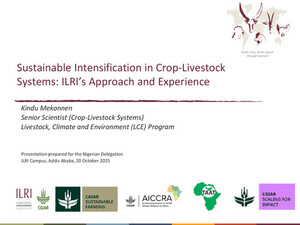
Sustainable Intensification in Crop-Livestock Systems: ILRI’s Approach and Experience
- Mekonnen, Kindu

Anthelmintic resistance in livestock in Africa: review of the current status
- Gatitu, Lucy
- Kasudi, Mitchelle R.
- Githigia, S.
- Moodley, Arshnee
- Muloi, Dishon M.



